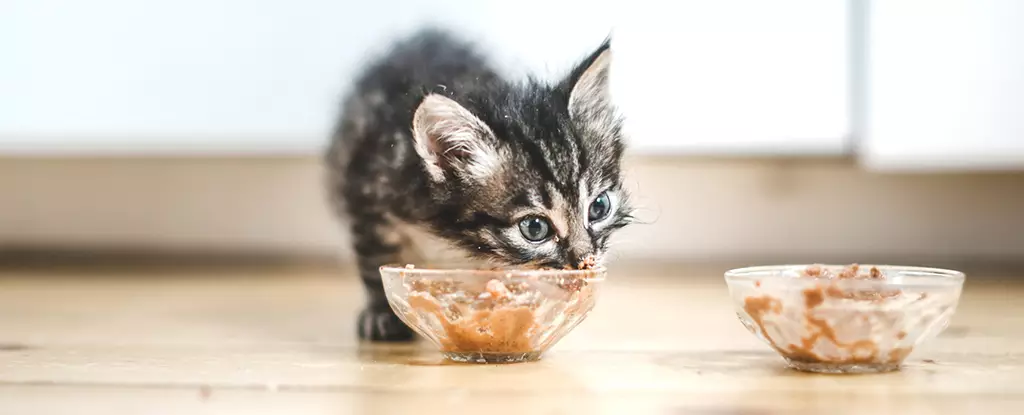The recent outbreak of H5N1 bird flu among domestic cats in Los Angeles County has raised alarms for pet owners, veterinarians, and health officials alike. This unsettling situation underscores the risks associated with raw pet diets and the potential for zoonotic diseases to impact not only our pets but also human populations. The incident serves as a timely reminder of the interconnected nature of human, animal, and environmental health.
Worrying Death Toll Among Feline Companions
At least six felines have succumbed to H5N1 in Los Angeles County, with many others exhibiting symptoms after consuming contaminated raw pet food and raw milk. A heart-wrenching example is that of a household that lost two out of five cats after they ingested two different brands of commercially available raw pet food. The fact that all the affected cats were indoor pets points to the serious implications of their diet, strongly indicating that the raw food was indeed the source of infection.
Veterinary reports reveal a rapid onset of illness in these cats, highlighting the severity of the situation. Out of the five cats, four faced critical health issues requiring intensive medical intervention, while one cat presented only mild symptoms. Tragically, for two severely affected cats, euthanasia became the most humane option due to their dire respiratory conditions. The authorities confirmed that one of these cats tested positive for H5N1, marking a troubling milestone in animal health in the region.
One particular brand, ‘Monarch Raw Pet Food,’ has been pinpointed as the source of live H5N1 virus, leading health officials to urge pet owners to dispose of any products from this brand immediately. This incident raises critical questions about the safety of raw diets for pets, which are increasingly popular among owners seeking to provide their companions with a “natural” diet. While raw pet food proponents often argue the nutritional advantages, the risks cannot be overlooked, especially in light of incidents like this.
Investigations also revealed further cases among other households. A single-cat household presented their pet with acute illness, also confirmed as H5N1 infection after consuming raw pet food. Additionally, five cats from two separate households became ill after consuming a recalled raw milk product meant for human consumption, again highlighting the need for stringent food safety measures in animal diets.
While cats are typically resistant to influenza A viruses, the occurrence of H5N1 infections in these felines raises pertinent concerns about the evolutionary potential of the virus. The Los Angeles County Department of Public Health (LACDPH) emphasized that to date, there is no evidence of localized transmission from cats to humans or cat-to-cat. Despite this reassurance, the increasing prevalence of H5N1 in various animal populations, including dairy cattle and wild birds, paints a more complex picture of zoonotic disease risks.
The situation calls for vigilance, as the potential for mutations in the virus could pose different health risks moving forward. At present, 66 human cases of H5N1 have been recorded in the U.S., with one fatality. This highlights the public health imperative to maintain awareness about the virus, especially among those who are in close contact with potentially infected animals.
Given the risks associated with H5N1, health officials offer several recommendations for pet owners. First and foremost is the advisement against feeding pets raw dairy, meat, poultry, or raw pet food. Such practices not only expose pets to viral infections but also carry other health risks including bacterial infections.
Furthermore, pet owners are encouraged to stay informed about food recalls, especially those pertaining to animal products. Health authorities recommend regularly checking the FDA’s Recalls, Market Withdrawals, & Safety Alerts website and sharing relevant information within their communities.
Lastly, it is crucial for pet owners to recognize the symptoms of H5N1 infection in pets. Signs to watch for include fever, lethargy, loss of appetite, jaundice, respiratory issues, and neurological symptoms. Prompt veterinary consultation can be vital in safeguarding both pets and humans, highlighting the need for proactive pet care in a landscape increasingly affected by zoonotic diseases.
The emergence of H5N1 in Los Angeles County cats serves as a stark reminder of the intricate relationship we share with the animal kingdom and the environment. This tragic incident calls for renewed scrutiny of pet diets, strict adherence to food safety guidelines, and a commitment to monitoring health warnings related to zoonotic diseases. Awareness is the first step towards prevention, enabling pet owners to protect their beloved companions and themselves in an ever-evolving public health landscape.

Leave a Reply